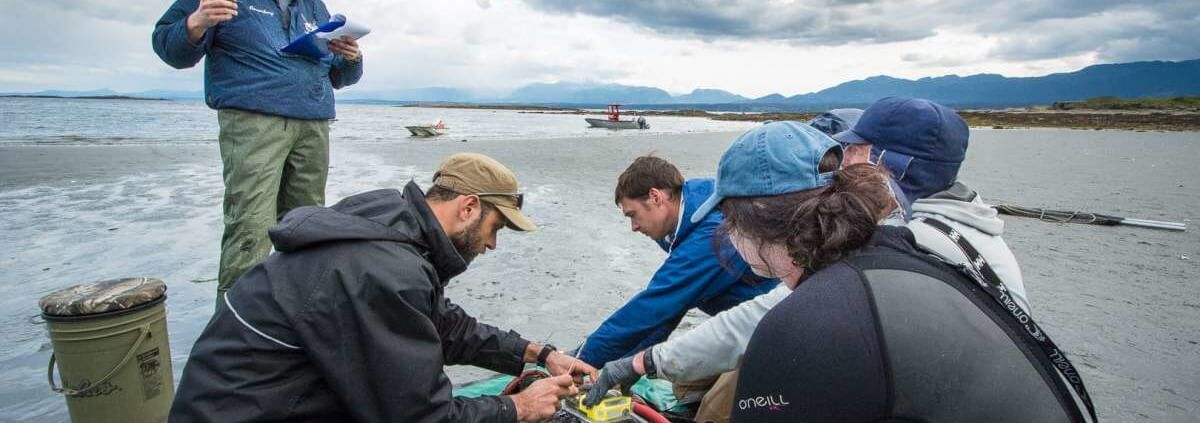Seal Beanies Reach a Milestone

In the early 1980’s when salmon survival was high, the seal population in the Strait of Georgia was approximately 10,000. But with new seal protection laws, the population exploded through the 1980s and early 90s to about 40,000 – coinciding with a sharp decline in Coho and Chinook marine survival. That’s why University of British Columbia doctoral student, Austen Thomas, developed a new ‘seal beanie’ technology for the Salish Sea Marine Survival Project that literally measures the amount of juvenile salmon consumed by individual seals.
Instantaneous Data Transfer
During a three year period Thomas worked with Wildlife Computers to develop a satellite-linked PIT tag scanner designed to quantify the number of PIT tagged fish ingested by harbour seals. These RFID tags are suitable to be affixed to the heads of harbour seals, and the internal PIT tag scanner is activated when seals attempt to capture fish (head-strikes), thereby detecting the presence of PIT tagged fish in the mouths of the seals. PIT tag detections are logged by the instrument and then transmitted via the ARGOS satellite network, providing the number of fish consumed and the complete PIT tag IDs.
The goal of the study is to finally answer the question of how much harbour seals contribute to the high mortality rates of juvenile Coho and Chinook salmon in the Salish Sea.
Good Ol’Fashioned Seal Wrangling
Early this year, the technology was deployed on 20 wild seals near Qualicum at the mouth of the Big Qualicum River. Seals were captured from varying locations in the estuary because seals have different feeding patterns based on their feeding locations. Representatives from the Marine Mammal Unit at University of British Columbia, joined the Vancouver Aquarium and Pacific Salmon Foundation staff in capturing the seals, outfitting them with beanies and packs before releasing them back into the wild.


Photocredit: Andrew Trites
The seals are currently being tracked on a website available to the public. Results are expected to be published early next year following a peer review.
![]()
This work is part of the Salish Sea Marine Survival Project a US-Canada initiative to recover Steelhead and salmon populations in the Salish Sea (Strait of Georgia, Strait of Juan de Fuca and Puget Sound) The Pacific Salmon Foundation is spearheading Canadian efforts in the Strait of Georgia. Budgeted at $10 million over five years, the project is currently in its second year of activity. A pilot phase was rolled out through 2014 in Cowichan Bay.


